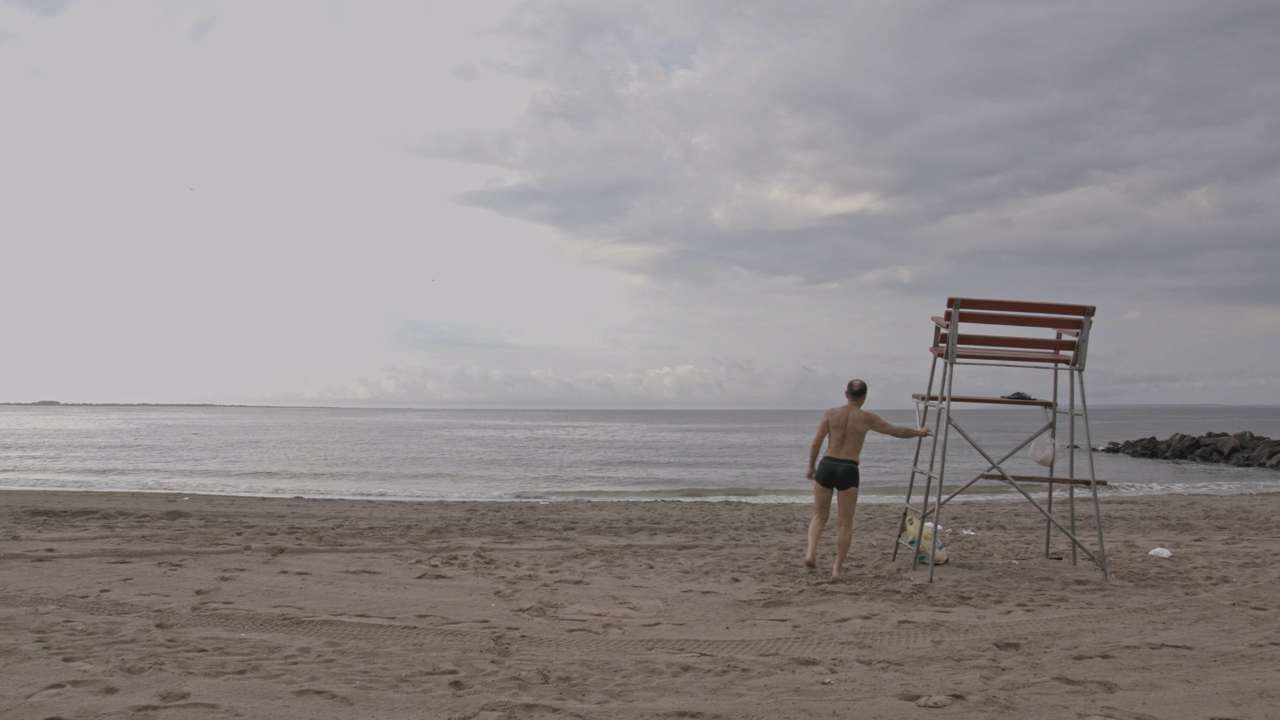Planet in Focus 2019: The Hottest August
One of the repeated images over the course of director Brett Story’s documentary, The Hottest August, is of air conditioning units hanging out the side of windows in New York City. Structured around a series of interviews with New Yorkers, both pre-arranged sit down discussions and random conversations with passersby, the film is restricted in time and place to New York in the August of 2017. The image of the air conditioner suggests a background context to the documentary: the era of climate crisis and living in overheated cities. But rather than directly approach the subject in a didactic way, Story lets her subjects guide the direction of the film and paints a much larger picture of a city, a nation, and the ways that climate crisis affects us as individuals.
Story’s interviews often begin with a question about the future, or whether people have “hope.” Occasionally this pivots to the question of climate, but it also leads to a great number of responses focused on economic concerns and how people make a living. The film’s very first scene features a construction worker, a self-proclaimed “union man,” who has moved to Rockaway Beach to spend a summer on the boardwalk that he helped build. His son is an ironworker, another union worker, who decries the impact of “non-union workers” (i.e. immigrants) on the wages and safety of his industry. Inevitably, interviewees end up pointing to the close connection between the question of economics and the question of climate.
In the background of the film, never directly approached, stand two events from the past decade: the election of Donald Trump as President of the United States in November 2016 and Hurricane Sandy, the powerful storm that hit New York City in October of 2012. Many of the people Story interviews are dealing with the repercussions of these two events. For instance, a recent bio grad who had hoped to land a job with the EPA notes that she’s been unable to do so due to “political reasons.” A conservationist who works at preserving nesting ospreys on Long Island points to houses still unrepaired from the storm five years earlier and notes that they’ll eventually have to leave as the sea level rises. The subject of the link between climate, politics, and economics emerges not by zooming in on these topics directly, but the accumulation of their impact on the people of New York.
At times the film feels somewhat haphazard, in the way that Story allows the interviewees to guide the discussion. As well, the film sometimes simply dwells on striking images of clouds, rain, and sun on the city. Viewers of these kinds of films are often inclined to see this kind of lack of overarching vision on the part of a director as a weakness, but in this case it saves the film from being overly didactic and allows a more complex and nuanced portrait of the city in the summer to emerge. More of a cinematic essay, the film resists a plot or point, and is more of an exploration of a theme or idea.
Structurally, the film feels indebted to the work of filmmakers like Chris Marker and his 1983 film Sans Soleil. Marker’s film is about the work of human memory, and Story is exploring similar things through the questions of hope and the future. She asks people about their plans, and in one striking moment during an interview with a fitness teacher and her mechanic husband, the idea that plans are memories of the future comes up. It makes the link between hope and memory clear, suggesting that both help to structure human life. It also suggests that the lack of hope felt around the climate crisis, especially amongst the young people Story interviews, leads to a lack of planning, but also paradoxically a lack of interest in the past.
The film also features several moments of narration by Claire Coulter, drawn from the work of three different authors: Zadie Smith, Karl Marx, and Annie Dillard. In a more direct film, these literary selections could come across as on-the-nose or heavy-handed, but they act as a kind of centering principle, bringing together the themes that the film picks up on in the interviews.
Ultimately, as a documentary, the film’s effect is somewhere between dystopian and elegiac. It points to the complexity and resilience of human beings, while also noting that almost none of these people feel they have any control over their futures, economic or climate. At the end, it is noted that August 2017 was not “the hottest August” ever, but background events, like the Charlottesville, Virginia white-supremacist march at the start of the month and the approach of Hurricane Harvey at the end of the month, suggest that it is representative of the kind of background “heat” that drives our particular moment in time.
The Hottest August then leaves one with as many questions as answers. Like a hot, late summer day, it never rouses, but rather leaves one restless at the constant, inescapable heat. It asks us to look forward to the future and what is to come, but never leaves the present moment.
7 out of 10
The Hottest August (Canada/USA, 2019)
Directed by Brett Story.
